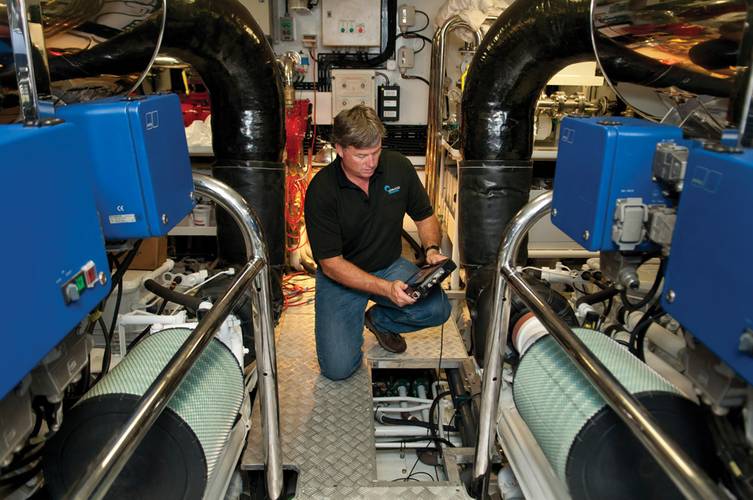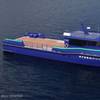Maintenance: How Well Do You Listen?
A predictive / preventative maintenance program that includes vibration analysis can help save time and money.
Are you one of those people who “listen to your gut?” If you are in charge of a vessel’s maintenance program – listening to your machinery is vital to its livelihood. And, if it’s in high demand, or on a tight schedule, chances are your livelihood, and that of your crew, is at stake too.
Vibration is annoying and uncomfortable – easy to notice on a pleasure craft – not so much on a commercial vessel. Chances are, if you wait until it’s obvious on a ship, you’ve waited too long and you’re in for some major downtime and repairs.
So how do you prevent outages and costly corrective maintenance? What can you do to be proactive about maintenance? Your best bet is to be ahead of the game by implementing a comprehensive predictive/preventative maintenance program that includes condition monitoring by means of vibration analysis.
If you were to look up the definition of vibration, you’d see that it refers to mechanical oscillations in relation to a set point of equilibrium. It’s usually referenced as aggravating/agitating and is associated with being wasteful of energy. When spoken of in relation to marine vessels, vibration is usually a symptom of mechanical misalignment, worn rubber elements, imbalances or insufficient support of the main propulsion units – to name a few.
When deficiencies such as these come into play, you are by no means running efficiently. Vibration Analysis can pinpoint what mechanical issues your vessel is having and leaves out the guesswork of choosing what repairs should be made. It is important to remember that all rotating machinery vibrates to some degree, but vibration that deviates from the norm indicates serious issues. Problems and deficiencies show themselves with more dramatic vibrations, and in other distinct ways. “In a perfect world, every vessel would get a baseline survey at launch,” said Rich Merhige, President, Advanced Mechanical Enterprises. “This initial survey can provide baseline data for acceptance testing and provide quick and easy diagnosis of future problems. Even periodic vibration monitoring provides trending that can forecast unplanned downtime and catastrophic failures – a huge deal if you lose the charter on an out of service vessel.”
Data collection is best done while the vessel is at sea in accordance with guidelines set forth by the Society of Naval Architects and Marine Engineers, as well as class societies. These guidelines dictate that measurements should be taken with the ship proceeding ahead, at a constant speed and course, in a depth of water not less than five times the draft of the ship with sea conditions not greater than sea state 3 on the WMO sea state code. A computer database of vibration measurement points is set up of the vessel’s machinery arrangement and hull in the vibration analysis software. Accelerometers are placed on key pieces of equipment so data can then be collected. The vibration data is then uploaded and analyzed by examining the frequency, amplitude, location and direction of each measurement point. This data provides a thorough machine condition evaluation and can detect a multitude of problems using known frequencies specific to the vessel, such as:
• Misalignment of shaft couplings, flexible machine couplings
• Misalignment of underwater running gear such as propeller struts
• Propeller defects
• Bent shafts
• Unbalance of rotating components
• Main engine misfire problems
• Mechanical looseness
• Deterioration of rolling-element bearings within transmissions and thrust bearings
• Gear wear
• Rubbing
• Structural resonance
• Machinery soft-foot conditions
The vibration analyst will then create a report with findings and recommendations. The data collected can pinpoint the cause of faults way before expensive stays at a shipyard are scheduled. Experienced analysts, such as those with Advanced Mechanical Enterprises/AME, use three key criteria to assess vibration on vessels:
1. Crew Comfort Level
Vibration levels are within the guidelines established for human comfort and well-being (habitability). In analyzing Passenger Comfort Level vibration; AME uses the applicable “Comfort Class” guidelines established by the major marine classification societies.
2. Machinery Condition
Vibration that does not cause any reduction in the life of the machine or any damage to nearby equipment and surroundings. In analyzing Machinery Condition; AME uses a combination of the following methods when performing data analysis:
a. Trend recorded vibration data on critical points on the machine periodically over the years.
b. Compare vibration levels of identical machines. If three machines have similar vibration spectra and the fourth machine exhibits higher levels at the same conditions, it is an easy matter to determine which machine is having problems.
c. Have the manufacturer evaluate vibration data.
d. Use a vibration severity monograph based on the accumulated experience of similar machines. In this regard; ISO Standard 10816 “Mechanical vibration – Evaluation of machine vibration by measurements on non-rotating parts” is referenced.
3. Structural Vibrations
Vibration that can appear in other areas of the vessel which are not in the accommodation areas which may be in resonance or near-resonance. In this case, considerable dynamic magnification can result in inadequate fatigue strength. Many factors can influence fatigue strength such as:
a. Material.
b. Structural details (stress
concentrations).
c. Vibration mode.
d. Welding processes applied.
e. Production methods.
f. Environment (corrosion).
Mechanical issues can burn a hole in your wallet, but what other harm can it cause? Even a minor misalignment (often a cause of vibration), can cause extra load and added stress on components, which increases the heat output from prime movers, making the machine with misalignment draw more current. This causes increased fuel consumption, thus increasing your carbon emissions. If aligned correctly, a noted 1-3% reduction in energy usage can be attained, not to mention a reduction in your vibration.
“When it comes to machinery health, consistency is what counts with any maintenance plan,” said Merhige. “Vibration analysis is a cost effective service that can be scheduled on a regular basis. And, most importantly, it increases your bottom line.”
(As published in the October 2013 edition of Maritime Reporter & Engineering News - www.marinelink.com)



















